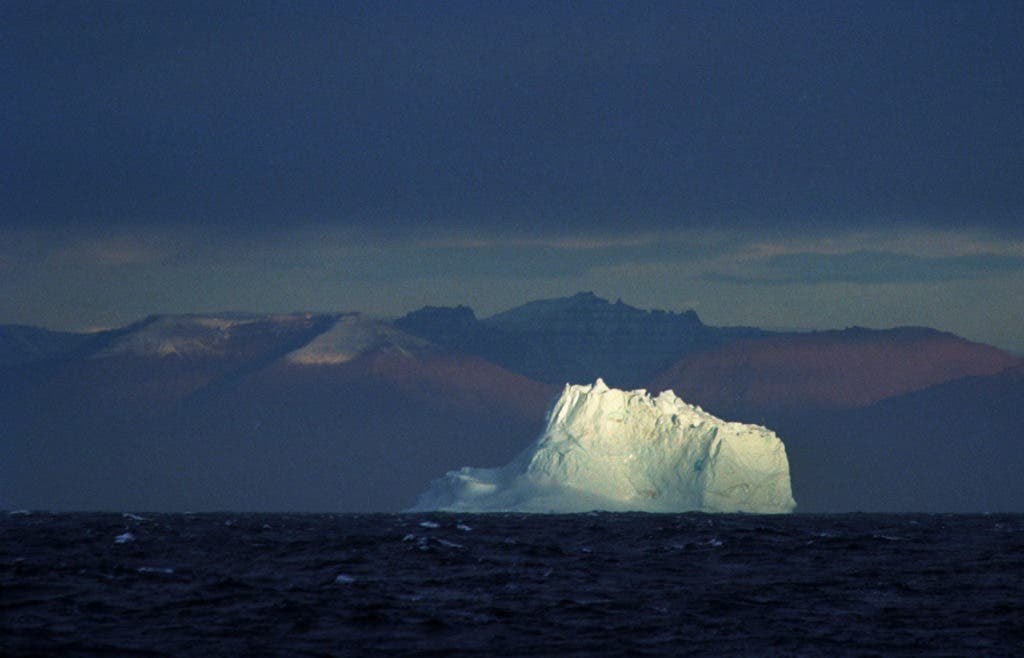Melting Antarctic icebergs can insulate the Southern Hemisphere from man-made climate change — for a while.

We’ve seen earlier today how climate heating impacts the stability of the Antarctic ice sheets — now let’s take a look at how it, in turn, impacts climate. New research from the University of Hawaii, Penn State University, the University of Massachusetts, and the IBS Center for Climate Physics (South Korea), states that the “iceberg effect” created by these melting ice sheets can “significantly” slow down human-induced warming in the Southern Hemisphere.
Not good, not terrible
“Our results demonstrate that the effect of Antarctic melting and icebergs needs to be included in computer model simulations of future climate change,” says Dr. Fabian Schloesser, lead author of the study.
“Climate models currently used in the 6th climate change assessment of the Intergovernmental Panel on Climate Change (IPCC) do not account for this process.”
Icebergs breaking off the Antarctic ice sheets can help delay the worst of climate change in the Southern Hemisphere, the team explains.
Recent observations regarding the rapid thinning of the Pine Island and Thwaites glacier regions in Antarctica (due to warmer oceans and climate-fueled shifts in wind patterns) raise concerns regarding an accelerated ice loss of the West Antarctic ice sheet. This also carries the scary prospect of rapid and significant sea-level rise.
Ice loss occurs either in the form of melt-induced (liquid) freshwater discharge into the ocean, or through (solid) iceberg calving. So part of the retreating ice sheet melts away, while the rest breaks off as icebergs. Putting two and two together, this means that we can expect to see more and more frequent iceberg discharge in the Antarctic.

Image credits Jerzy Strzelecki via Wikimedia.
Icebergs are huge things. They can persist for years at a time, floating along their merry way through the Southern Ocean until they reach warmer waters and melt. Now, since icebergs are just hefty chunks of ice, this also helps cool down ocean water as they go. Furthermore, freshwater discharge from icebergs impacts currents by lowering ocean salinity.
What the team set out to understand was whether this “iceberg effect” can delay or alter future climate change in the Southern Hemisphere. They ran a series of climate heating computer simulations, which include the combined freshwater and cooling effects of icebergs on the ocean, to quantify the effect of the icebergs on future climate in the area.
The researchers tweaked their model so that the size and number of icebergs it ‘releases’ mimics the gradual retreat of the Antarctic ice sheet over a period of several centuries. Then they simply switched the “iceberg effect” on and off to see what would happen. The results showed that the combined effect of those icebergs can significantly slow down man-made climate heating in the Southern Hemisphere, impacting global winds and rainfall patterns.
While all that ice can drain away a lot of heat it also comes with a caveat: sea level rise
“To melt the icebergs released over the 21st century in one of our extreme Antarctic ice-sheet retreat scenarios would require 400 times the current annual world energy consumption,” explains Dr. Tobias Friedrich, coauthor of the study.
“Global sea level would rise by about 80 cm, impacting many coastal regions and communities worldwide.”
The team explains that the iceberg effect largely compensates for the processes that were previously thought to accelerate Antarctic melting.
“Our research highlights the role of icebergs in global climate change and sea level rise,” says Prof. Axel Timmermann, corresponding author of the study and Director of the IBS Center for Climate Physics.
“Depending on how quickly the West Antarctic ice sheet disintegrates, the iceberg effect can delay future warming in cities such as Buenos Aires and Cape Town by 10-50 years.”
The research team plans to further analyze the interplay between ice, climate, and global sea level with a new computer model that they developed.
The paper “Antarctic iceberg impacts on future Southern Hemisphere climate” has been published in the journal Nature Climate Change.






